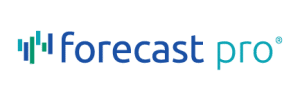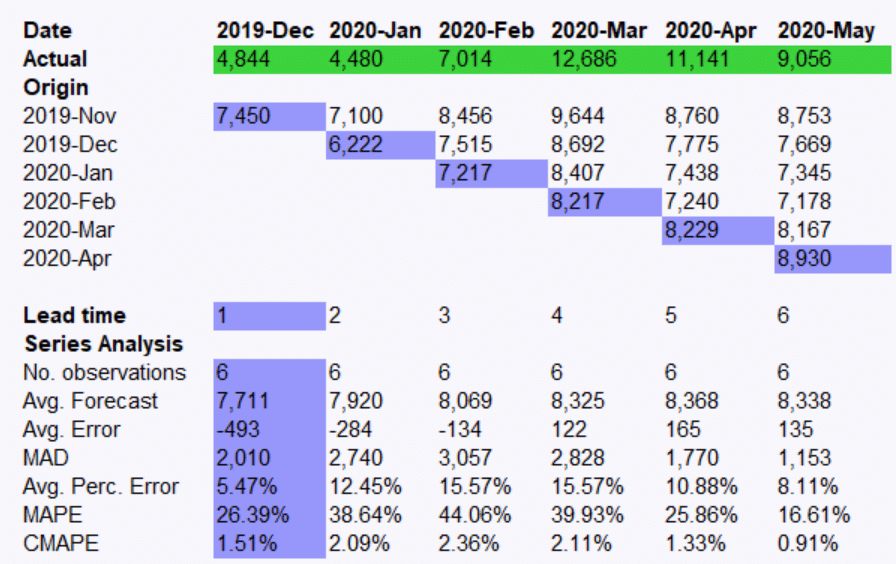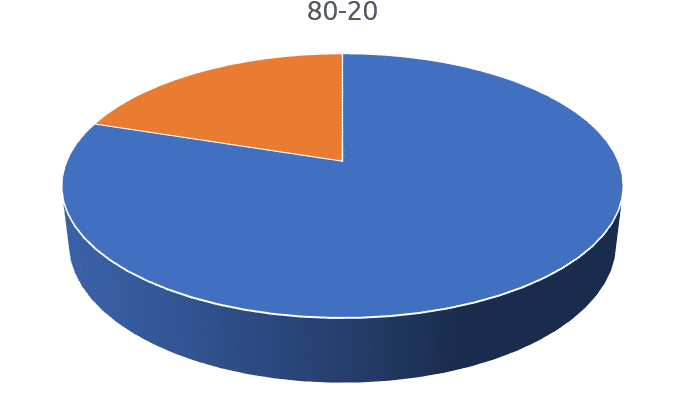 Time series methods are forecasting techniques that base the forecast solely on the demand history of the item you are forecasting. They work by capturing patterns in the historical data and extrapolating those patterns into the future. Time series methods are appropriate when you can assume a reasonable amount of continuity between the past and the future. They are best suited to shorter-term forecasting (say 18 months or less). This is due to their assumption that future patterns and trends will resemble current patterns and trends. This is a reasonable assumption in the short term but becomes more tenuous the further out you forecast.
Time series methods are forecasting techniques that base the forecast solely on the demand history of the item you are forecasting. They work by capturing patterns in the historical data and extrapolating those patterns into the future. Time series methods are appropriate when you can assume a reasonable amount of continuity between the past and the future. They are best suited to shorter-term forecasting (say 18 months or less). This is due to their assumption that future patterns and trends will resemble current patterns and trends. This is a reasonable assumption in the short term but becomes more tenuous the further out you forecast.
The Models
Very simple models. Moving averages, “same as last year”, percentage growth and best-fit line (i.e., regression against time) are all very simple time series models that can be used to generate forecasts. They can be implemented in a spreadsheet in a matter of seconds and do not require any statistical expertise on the part of the forecaster; however, for most business applications these methods are too simple and more accurate forecasts can almost always be generated using alternative time series methods.
Exponential smoothing models. Exponential smoothing is the method of choice for many corporate forecasters. The models perform well in terms of accuracy, are easy to apply and can be automated, allowing them to be used for large scale forecasting. Exponential smoothing models capture and forecast the level of the data along with different types of trends and seasonal patterns. The models are adaptive and the forecasts give greater emphasis to the recent history vs. the more distant past.
Box-Jenkins (ARIMA) models. Box-Jenkins models are similar to exponential smoothing models in that they are adaptive, can model trends and seasonal patterns, and can be automated. They differ in that they are based on autocorrelations (patterns in time) rather than a structural view of level, trend and seasonality. Box-Jenkins models tend to perform better than exponential smoothing models for longer, more stable data sets and not as well for noisier, more volatile data.
Croston’s intermittent demand model. The Croston’s model is specifically designed for data sets where the demand for any given period is often zero and the exact timing of the next order is not known. Low-level data (e.g., SKU by customer) or spare parts often exhibit this kind of demand pattern. This method works by combining a smoothed estimate of the average demand for periods that have demand with a smoothed estimate of the average demand interval. The forecasts are not magic (they won’t tell you when the next order will be placed); however, they often yield a better forecast for expected demand than other time series approaches.
Selecting the Model
Selecting the appropriate time series method for a given data set can be accomplished several ways. For instance, the forecaster can use his or her knowledge of the data to match the appropriate method. Alternatively, one could test the various methods under consideration and select the method that minimized either a within-sample or an out-of-sample error measure. Forecast Pro’s expert selection algorithm automatically selects the appropriate time series method using a combination of rule-based logic and out-of-sample testing. Time series methods considered in expert selection mode include different forms of exponential smoothing, Box-Jenkins models, the Croston’s model, discrete data models and moving averages.
Finally, it should be noted that there are many situations where time series methods should not be considered. These include new product forecasting, forecasting products subject to promotions and/or business interruptions and forecasting products which are being driven by explanatory variables such as price, economic indicators, etc. To learn more about these methods, see other posts in this blog which discuss forecasting under these scenarios or attend one of our comprehensive forecasting seminars
About the author:
 Eric Stellwagen is the co-founder of Business Forecast Systems, Inc. and the co-author of the Forecast Pro software product line. With more than 29 years of expertise, he is widely recognized as a leader in the field of business forecasting. He has consulted extensively with many leading firms—including Coca-Cola, Procter & Gamble, Merck, Blue Cross Blue Shield, Nabisco, Owens-Corning and Verizon—to help them address their forecasting challenges. Eric has presented workshops for a variety of organizations including APICS, the International Institute of Forecasters (IIF), the Institute of Business Forecasting (IBF), the Institute for Operations Research and the Management Sciences (INFORMS), and the University of Tennessee. He is currently serving on the board of directors of the IIF and the practitioner advisory board of Foresight: The International Journal of Applied Forecasting.
Eric Stellwagen is the co-founder of Business Forecast Systems, Inc. and the co-author of the Forecast Pro software product line. With more than 29 years of expertise, he is widely recognized as a leader in the field of business forecasting. He has consulted extensively with many leading firms—including Coca-Cola, Procter & Gamble, Merck, Blue Cross Blue Shield, Nabisco, Owens-Corning and Verizon—to help them address their forecasting challenges. Eric has presented workshops for a variety of organizations including APICS, the International Institute of Forecasters (IIF), the Institute of Business Forecasting (IBF), the Institute for Operations Research and the Management Sciences (INFORMS), and the University of Tennessee. He is currently serving on the board of directors of the IIF and the practitioner advisory board of Foresight: The International Journal of Applied Forecasting.




